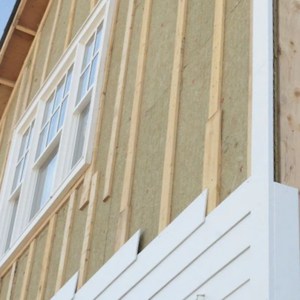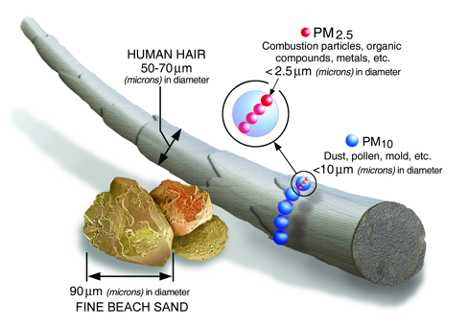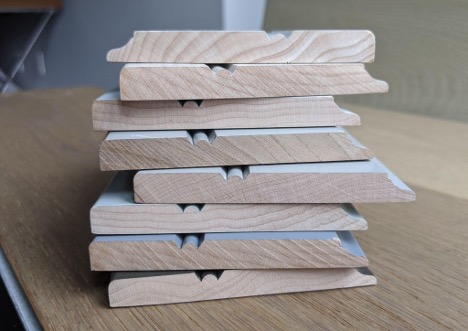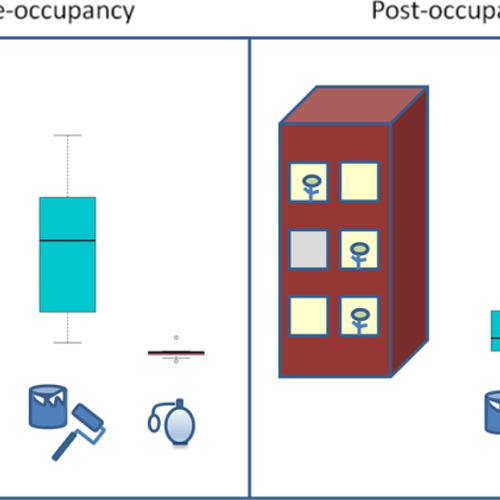
Image Credit: Chaps1 / CC BY 2.0 / Flickr
As I was frantically cleaning my apartment last month in preparation for a visit from my parents, I paused for a moment to stare at the dark smudge on the damp cloth I was dusting with. Never in my wildest dreams did I imagine that little dust smudge contains a whole universe of toxic chemicals — chemicals that pollute the globe and build up in wildlife and humans, that can cause cancer, or are linked to birth defects in babies.
Never, that is, until I collaborated on a new study to put together all the data we have on chemicals in U.S. indoor dust with scientists from George Washington University, Silent Spring Institute, Harvard University, and University of California–San Francisco. Dust is the common congregation place for all kinds of chemicals that migrate out of everyday products in our homes — flooring, furniture, personal care products, cleaning products, and myriad others. So our idea was that by looking at dust, as well as the individual chemicals in dust, we could reveal the bigger picture of chemical contamination in the home — just like individual dots in an Impressionist painting create a larger image. And what we found paints a disturbing picture of what’s really inside home sweet home across America.
What our study found
We looked at each chemical in household dust from three different angles: how much is in the dust, how much gets into us, and what the health hazards are. But no matter which way we looked at it, phthalate and flame-retardant chemicals stood out as top offenders. They’re found at higher levels, have higher estimated intakes for kids, and are linked to multiple health hazards.
Phthalates are used in numerous plastic and vinyl materials, as well as personal care products and cleaning products. Flame retardants are chemicals found in furniture, electronics, and building insulation. These products all shed phthalates and flame retardants into dust.
To better understand how risky these chemicals in dust might be, we completed an additional analysis separately from the published study. Unfortunately there are no standards established for chemicals in household dust, so we looked for something else we could compare to. Because exposure to dust is a lot like exposure to soil, we used soil-screening levels established by the U.S. Environmental Protection Agency for sites contaminated with chemicals as a comparison.
These soil-screening numbers reflect the levels at which a chemical might pose health risks to people, and thus require further investigation. The EPA calculates two different numbers, one for cancer health risks and another for non-cancer health risks, such as developmental or reproductive toxicity. Note that many chemicals in our study do not have soil-screening levels established, but we did the comparison for the ones that did.
The graphs show the average dust concentration we calculated in our study by pooling data from individual studies (circle), the highest (maximum) level of the chemical found in each individual study (triangle), and the EPA screening level (black line). Shockingly, the levels of some phthalates and flame retardants in U.S. house dust exceeded the EPA’s screening numbers (shown in red).

For the phthalate DEHP, average levels in dust exceeded EPA screening levels — for both cancer and non-cancer effects. DEHP is also ubiquitous in U.S. homes, as studies that tested for it found it in 100% of dust samples. This means that if an EPA site manager tested the dust in a typical living room, they would be concerned about the level of DEHP found there!

For the phthalate BBP and the flame retardants TDCIPP, TCIPP, and TCEP, the average level in dust does not exceed the soil-screening level (though it comes close for TDCIPP cancer risks). But as the “highest concentration in dust” data points show, levels in some homes are much higher than the average, sometimes by an order of magnitude or more.
Taking steps to reduce risk
Higher levels of phthalates or flame retardants in indoor dust may be linked to the presence of particular products (like vinyl flooring for phthalates or baby products for flame retardants) and/or particular building characteristics, like the ventilation rate.
It’s also important to note that our comparison only considers the amount of chemical in dust in the home, but in reality, exposures are almost certainly higher because we come into contact with these chemicals from many other sources, including the food we eat, products we use, and other places we spend time.
Products with these chemicals don’t belong in our homes; hazardous chemicals linked to adverse health effects should be removed and replaced with safer alternatives. With recent reforms to the federal Toxic Substances Control Act, the EPA finally has the opportunity to start protecting the public from toxic chemicals. We’re working hard to stand up to the chemical industry and ensure strong implementation of the new law.
In the meantime, there are a number of steps you can take to protect your families from toxic dust, including:
- Remove dust from your hands. Wash your hands and your children’s hands frequently, and always before eating. Use plain soap and water, avoiding fragranced and antibacterial soaps.
- Keep household dust to a minimum. Dust with a damp cloth, regularly go over floors with a wet mop, and use a vacuum cleaner with a high-efficiency particulate air (HEPA) filter.
- Use the Silent Spring Detox Me app. This free smartphone app walks you through simple, research-based tips on how to reduce your exposure to potentially harmful chemicals where you live and work, and it keeps track of your progress.
And please take action now on phthalates. Urge the U.S. Food & Drug Administration and the Consumer Product Safety Commission to protect kids and families from the dangers of phthalates by banning these hazardous chemicals from food, toys, and other children’s products.
_________________________________________________________________________
Veena Singla is a staff scientist in the Health & Environment program at the Natural Resources Defense Council. This post originally appeared at NRDC’s website.
Weekly Newsletter
Get building science and energy efficiency advice, plus special offers, in your inbox.














5 Comments
Indoor Air Quality
You can now paint a permanent air purification system on to the walls of your home or office, just mix the ionic paint additive by Air-ReNu, with the paint and the walls become a permanent air purification system. Your home will be free of toxins, pet, smoking and cooking odors; one treatment will continue to remain effective as long as the paint on the wall's surface is intact.
Response to Bert Gruder
Bert,
Since your name is listed on the Air-ReNu web site, it's clear that you are associated with this company. You should know that the GBA comment feature is not an invitation to manufacturers to try to post free ads. Posting commercial messages is a violation of our site's rules.
Some of your statements are demonstrably false -- most notably the ridiculous statement that after a homeowner uses your paint, "Your home will be free of toxins."
Option for new construction
For my current house, I installed Certainteed AirRenew M2Tech drywall on the exterior walls. The product was originally developed for hospitals and contains an additive that binds with formaldehyde and aldehydes. Overkill? Maybe. But even green homes can host a lot of stuff.
Drywall and formaldehyde
Steve,
There are questions about the CertainTeed product that claims to remove formaldehyde from the air. Most of the questions revolve around how the product performs when it is 5 or 10 years old. Experts I have spoken to have said, "We need more long-term data."
Regarding formaldehyde and
Regarding formaldehyde and probably other chemicals, I think it makes sense to run high ventilation rates for the first year. "within one year...rates are less than 20%...". Also maintain slightly positive building pressure, except during the heating season.
Log in or create an account to post a comment.
Sign up Log in